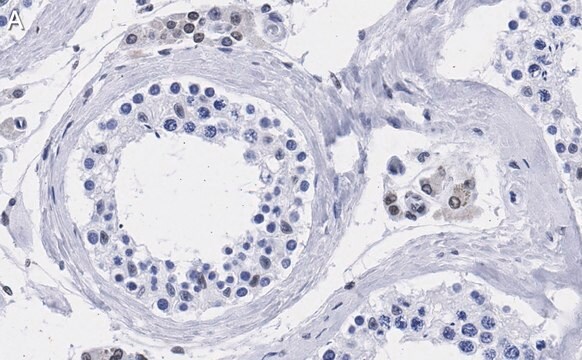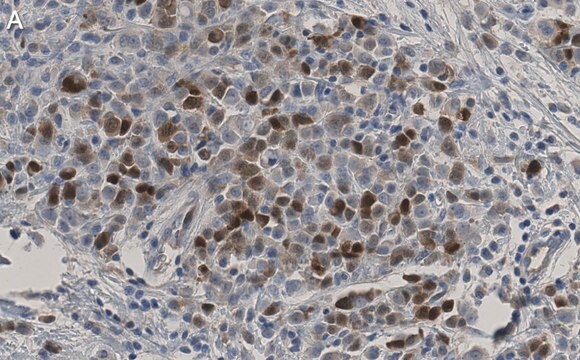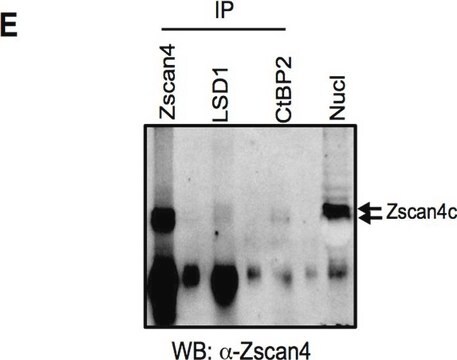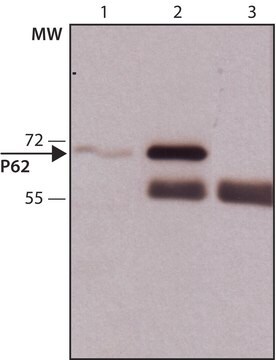Kluczowe dokumenty
SAB4200803
Anti-TFE3 antibody produced in rabbit
affinity isolated antibody, buffered aqueous solution
Synonim(y):
Anti-Class E basic helix-loop-helix protein 33, Anti-Transcription factor E3, Anti-bHLHe33
About This Item
Polecane produkty
pochodzenie biologiczne
rabbit
forma przeciwciała
affinity isolated antibody
rodzaj przeciwciała
primary antibodies
klon
polyclonal
Formularz
buffered aqueous solution
masa cząsteczkowa
~60 kDa
reaktywność gatunkowa
mouse, human
opakowanie
antibody small pack of 25 μL
stężenie
~1.0 mg/mL
metody
immunoblotting: 4-8 μg/mL using human HeLa cells extract
immunofluorescence: 2.5-5 μg/mL using mouse embryo fibroblast NIH-3T3 cells
numer dostępu UniProt
Warunki transportu
dry ice
temp. przechowywania
−20°C
docelowa modyfikacja potranslacyjna
unmodified
informacje o genach
human ... TFE3(7030)
Opis ogólny
Anti-TFE3 antibody specifically recognizes TFE3 from human and mouse origin.
Immunogen
Zastosowanie
Postać fizyczna
Inne uwagi
Nie możesz znaleźć właściwego produktu?
Wypróbuj nasz Narzędzie selektora produktów.
Kod klasy składowania
10 - Combustible liquids
Klasa zagrożenia wodnego (WGK)
WGK 3
Temperatura zapłonu (°F)
Not applicable
Temperatura zapłonu (°C)
Not applicable
Wybierz jedną z najnowszych wersji:
Certyfikaty analizy (CoA)
Nie widzisz odpowiedniej wersji?
Jeśli potrzebujesz konkretnej wersji, możesz wyszukać konkretny certyfikat według numeru partii lub serii.
Masz już ten produkt?
Dokumenty związane z niedawno zakupionymi produktami zostały zamieszczone w Bibliotece dokumentów.
Nasz zespół naukowców ma doświadczenie we wszystkich obszarach badań, w tym w naukach przyrodniczych, materiałoznawstwie, syntezie chemicznej, chromatografii, analityce i wielu innych dziedzinach.
Skontaktuj się z zespołem ds. pomocy technicznej








